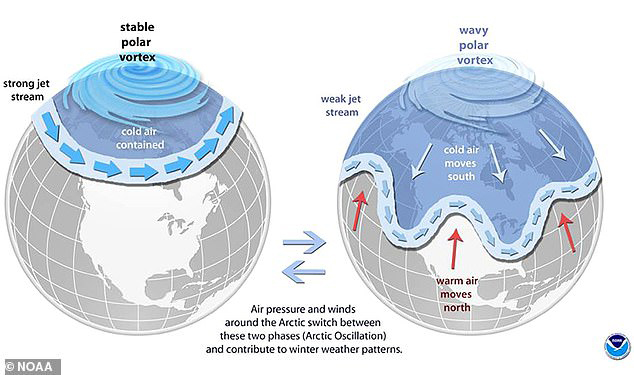
Learn How a Wobbly Polar Vortex Can Bring Extreme Cold
ADVERTISEMENT
Who or what verifies your data? Also who proof reads this stuff?
With the idea of quantity and the fact alcohol,simoly won't get the job done we have educators and all other types of fields if workers that understand BATTERY POWERED AS FAR AS LOCATION THE ARTIC WATERS. These times of warming were predictable and we gave to understand that GOD gives us power that is monitored and discussed to keep the polar region at a legal of moderate weather. So with banana cream boat guy its understanding to freeze the waters because if you examine the waters can be frozen but the battery packs have to be measured to and idealistic that they will stay frozen compared to the closeness of the sunand the fact ice water and drinking water will help out with the legal ideas that can bring a heated world but is moderated. We are told the world is supposed to be as the tropics and it will just take the right measurement and battery powered remotes with withstanding antennas to measure and basically refreeze the polar region to its back to normal weather pattern as the collegiate and professors are on it thank you for letting me add my two cents have a lovely day,sir
In this part of the country we have pretty good weather records that go back about 150 years. If the earth were only 15,000 years old, that would be a 1% sample. Pretty small sample to try to establish what is "normal."
Scientists tell us there have been several ice ages over thousands of years with periods of warming between. I don't suppose our ancestors were sitting around a campfire banging their clubs on the ground asking, "How have we caused this?"
People were of insignificant influence on the earth back then. Can't possibly compare the 2 eras of human influence
Other than some reversals, ice has been melting back ever since the ice age about 4500 years ago. As it melts, more dark earth is exposed to absorb heat from the sun, so the warming accelerates. Warming is due to solar activity. It's not man-made. CO2 is rather insignificant. As for the fluctuations, warming comes first; then the increased CO2 because the warmer water releases it to the atmosphere.










Comments